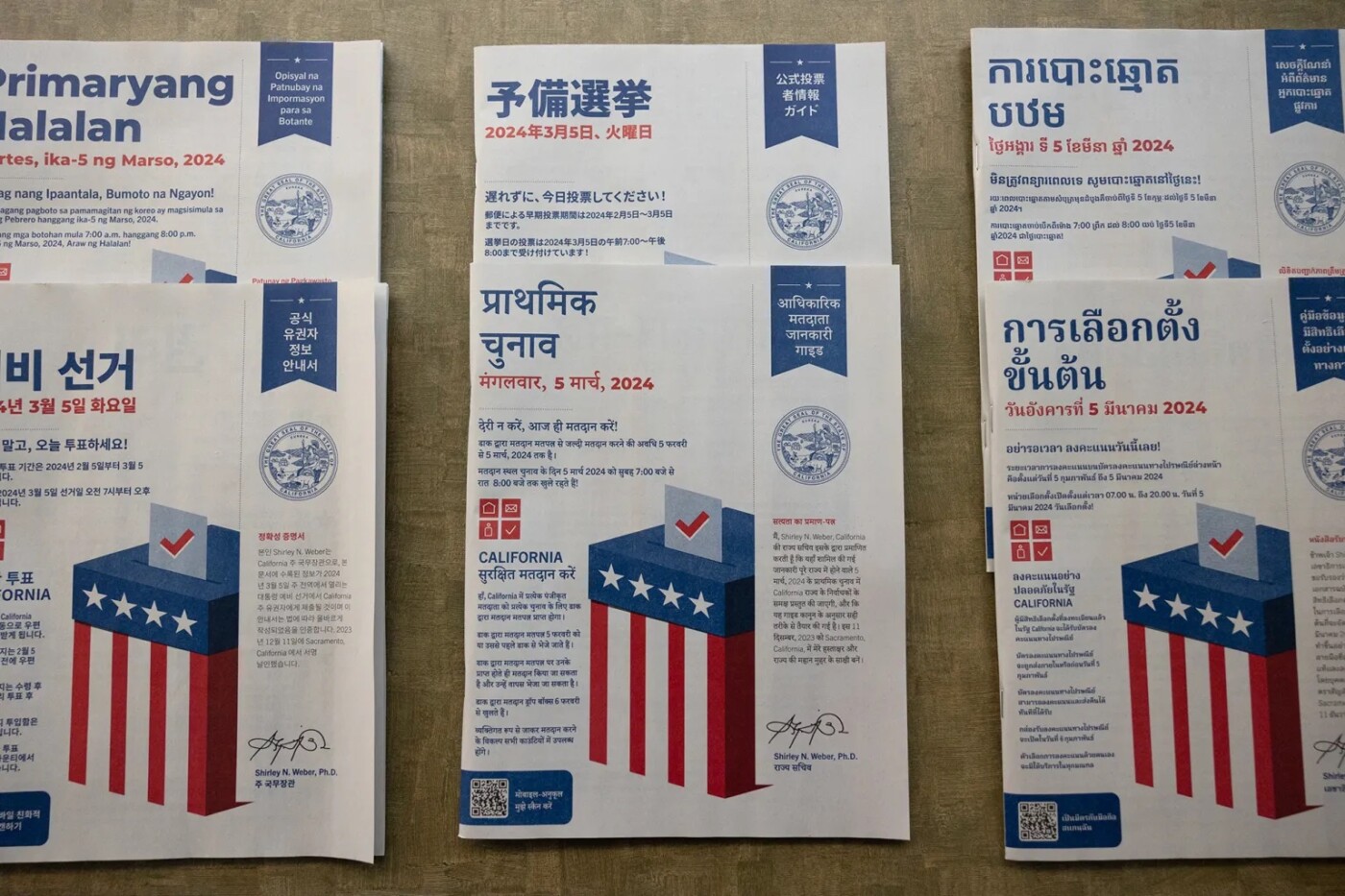What’s the cost of democracy in California?
If we calculate that based just on the pages informing the state’s 22 million voters about Proposition 1 in the official March voter guide, about $8 million.
Each page of the primary voter guide cost $117,880 for printing, translations, audio, mailing, and postage, according to the Secretary of State’s office. The total cost of the 112-page March voter guide was $13.2 million.
That compares to $7.2 million for the 64-page 2022 primary guide, $6.3 million for the 48-page 2020 guide, $7.2 million for the 96-page 2018 guide and $3.7 million for the 32-page 2016 guide according to the Secretary of State’s office.
The bulk of this year’s guide was the text for Prop.1, which took up 68 pages. The two-part measure, which barely passed with 50.2% of the vote and was placed on the March ballot by the Legislature, authorizes a $6.4 billion bond to build treatment facilities and supportive housing for people with mental health and addiction challenges, and requires cities to spend more of a specific pool of tax revenue on housing instead of other services.
It’s typical for the lower-turnout primary ballot to include fewer propositions, especially since 2011, when the Legislature passed a law so initiatives only appear on the general election ballot.
In November 2016, the voter guide hit a record 224 pages and cost $15 million to produce. It included 17 ballot propositions, including 33 pages of the text for Proposition 64, which legalized recreational marijuana.
The ballot this November now has 12 measures, but that number is likely to increase before the June 27 deadline.
There’s a 500-word limit for the arguments proponents and opponents of ballot measures can submit, but that doesn’t apply to the text of proposed laws.
More information for voters is always better, says Carmen Balber, executive director of Consumer Watchdog, an advocacy group that has also sponsored several ballot measures.
“It’s unfortunate if the cost has risen that high — but at the end of the day, voters need as much information as possible to make an informed choice,” she said.
It’s also important to print the guide and mail it to each voter to ensure it’s accessible to everyone, she added. While the Secretary of State posts a version online, not all Californians have easy internet access.
Official sources — whether through the state or counties — are where most voters get their information, said Mindy Romero, founder and director of the Center for Inclusive Democracy at the University of Southern California.
“People will turn to other sources including friends and family, but still, those official sources are where the bulk of voters are getting their information — so they’re important,” she said. “Voters need the information and have a right to that information.”
Still, there could be some cost savings. Balber said she receives three copies of the voter guide each election — one in her name, one to an incorrect spelling of her name, and one to someone who was previously registered at her address.
The Secretary of State’s office said it conducts list maintenance on a daily basis. Voter registration files are updated in VoteCal — a single statewide voter file established in 2016, and through address updates with the DMV or the post office, according to the Public Policy Institute of California.
The state could also allow people to opt out of the print guide — but that should never be the default, Balber said: “We would never want to take that away from the public.”
